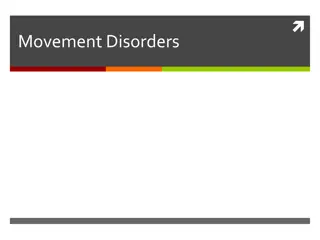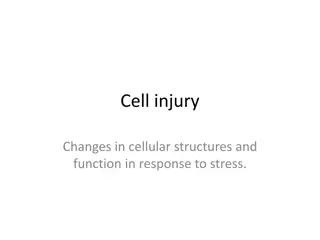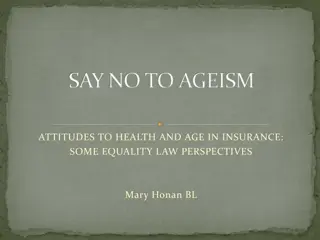Effectiveness of Aflibercept for Neovascular Age-Related Macular Degeneration
This study compares the effectiveness and safety of intravitreal injections of aflibercept versus ranibizumab and bevacizumab for patients with neovascular age-related macular degeneration (AMD). Results show similar visual acuity outcomes and achievement of dry retina between aflibercept and ranibizumab groups at one year.
Download Presentation

Please find below an Image/Link to download the presentation.
The content on the website is provided AS IS for your information and personal use only. It may not be sold, licensed, or shared on other websites without obtaining consent from the author.If you encounter any issues during the download, it is possible that the publisher has removed the file from their server.
You are allowed to download the files provided on this website for personal or commercial use, subject to the condition that they are used lawfully. All files are the property of their respective owners.
The content on the website is provided AS IS for your information and personal use only. It may not be sold, licensed, or shared on other websites without obtaining consent from the author.
E N D
Presentation Transcript
Afliberceptfor neovascularage- related macular degeneration Salman Sarwar, Elizabeth Clearfield, Mohamed Soliman, Mohammed Sadiq, Andrew Baldwin, Mostafa Hanout, Aniruddha Agarwal, Yasir Sepah, Diana Do, Quan Nguyen Issue 2, 2016 A presentation to: Meeting name Date Trusted evidence. Informed decisions. Better health.
Table of Contents 01 Background 02 Typesof studies 03 Key results 04 Tables (Risk of Bias/Forest Plots) 05 Conclusions 06 Acknowledgements
01: Background Neovascularage-related macular degeneration is caused by an overgrowth of new blood vessels in the choloroid Anti-vascular endothelial growth factor (Anti-VEGF) drugs block the signal protein which causes this overgrowth Ranibizumab, bevacizumab, and afliberceptare commonly used Objective To assess and compare the effectiveness and safety of intravitreal injections of afliberceptversus ranibizumab, bevacizumab, or sham for patients with neovascularAMD
02: Types of studies Participants Two randomized controlled trials; 2457 eyes of 2457 participants Interventions Aflibercept VERSUS Ranibizumab
03: Key results Visual acuity outcomes were similar between afliberceptand ranibizumab groups at one year. The proportion of participants who gained 15 or more letters of BCVA by one year of follow-up was approximately 32% for both afliberceptand ranibizumab. RR 0.97, 95% CI 0.85 to 1.11
03: Key results (continued) At one year, the proportion of eyes that achieved dry retina was similar between afliberceptand ranibizumab groups RR 1.06, 95% CI 0.98 to 1.14
04: Tables Mean change in BCVA in ETDRS letters at 1 year
04: Tables Gain of >15 letters of BCVA at 1 year
04: Tables Absence of fluid on optical coherence tomography at 1 year
04: Tables Mean change in vision-related quality-of-life scores at 1 year
05: Conclusions Results of this review document the comparative effectiveness of afliberceptversus ranibizumab for visual acuity and morphological outcomes in eyes with neovascularAMD.
06: Acknowledgements Cochrane Eyes and Vision US Satellite, funded by the National Eye Institute, National Institutes of Health Cochrane Eyes and Vision Editorial Base, funded by the UK National Health Service Research and Development Programme Salman Sarwar, Elizabeth Clearfield, Mohamed Soliman, Mohammed Sadiq, Andrew Baldwin, Mostafa Hanout, Aniruddha Agarwal, Yasir Sepah, Diana Do, Quan Nguyen Review citation SarwarS, Clearfield E, Soliman MK, SadiqMA, Baldwin AJ, HanoutM, Agarwal A, SepahYJ, Do DV, Nguyen QD. Aflibercept for neovascular age-related macular degeneration. Cochrane Database of Systematic Reviews 2016, Issue 2. Art. No.: CD011346. DOI: 10.1002/14651858.CD011346.pub2























